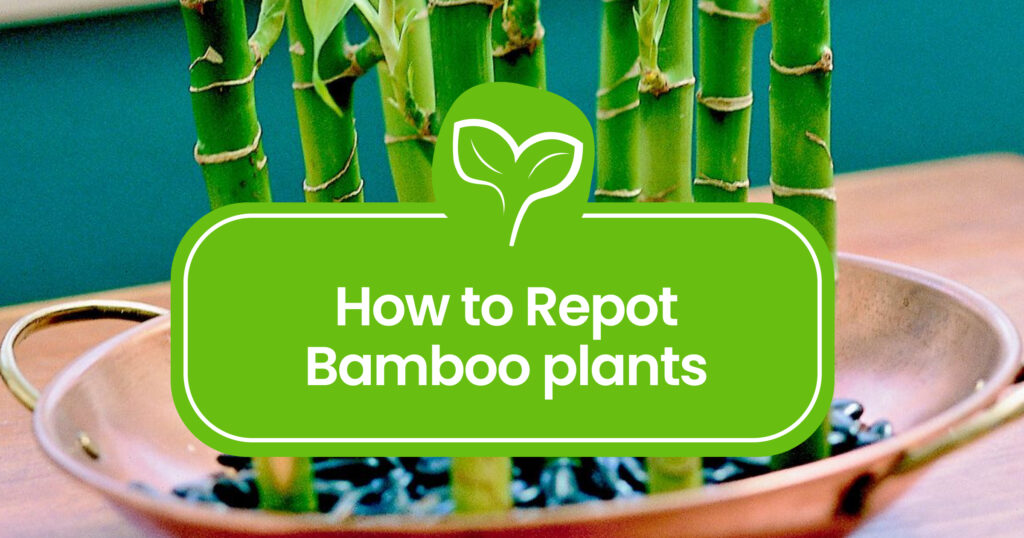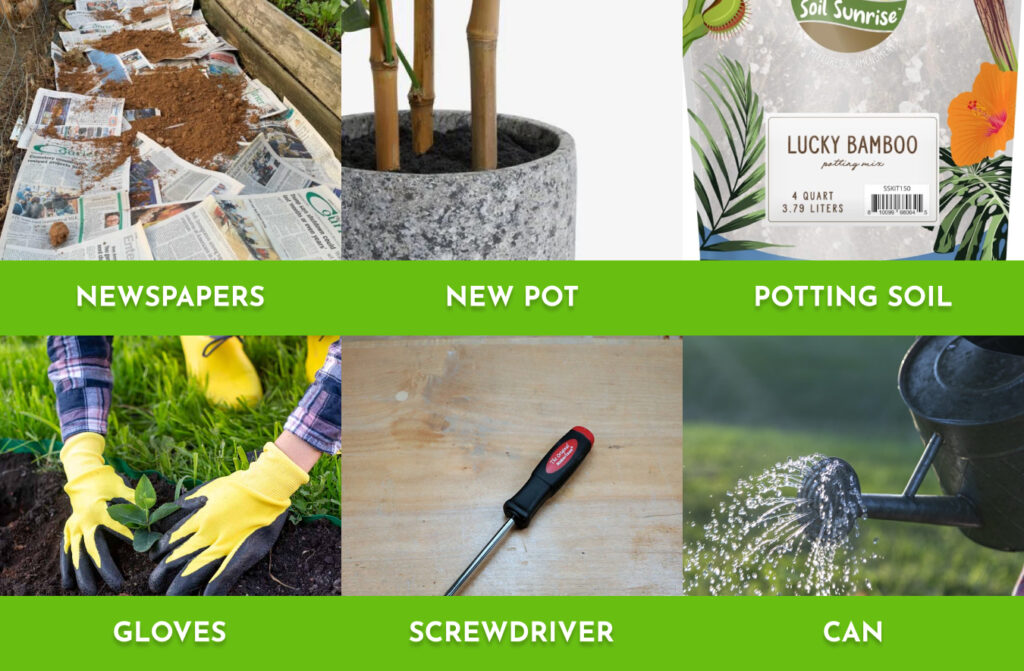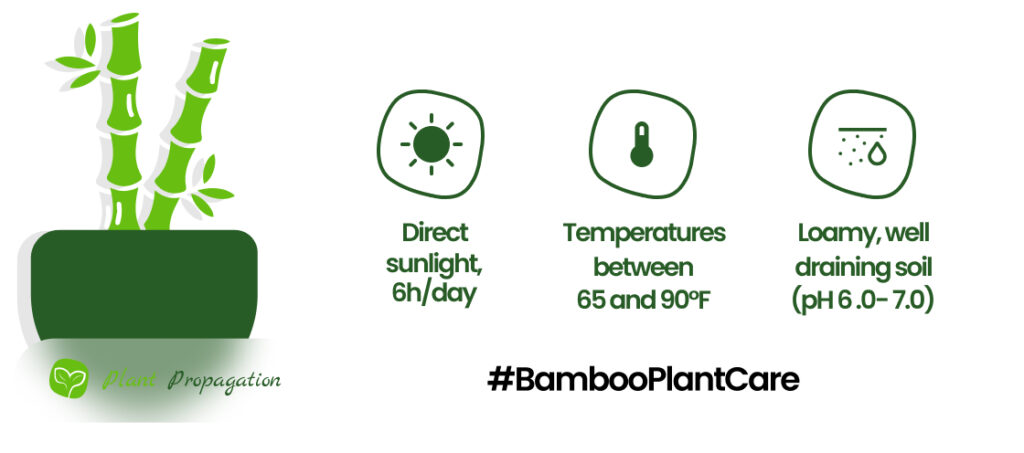
Bamboo plants are like nature’s own piece of art, adding a touch of elegance and tranquility to any space. However, like all plants, they too require a little TLC to thrive. One essential aspect of caring for your bamboo is knowing when and how to repot a bamboo plant. In this guide, we’ll walk you through the process step by step, ensuring your bamboo continues to flourish in its new home.
When to Repot a Bamboo Plant?
Let’s talk about when it’s the right time to give your bamboo a new pot. Bamboos are pretty low-maintenance, but they do have their preferences. Ideally, you should consider repotting when:
- Root-bound Situation: If you notice your bamboo’s roots are outgrowing their current pot, it’s time for an upgrade. Depending on the variety, you might need to repot every 3-5 years.
- Deteriorating Health: If your bamboo seems unhealthy despite your best efforts, a larger pot with fresh soil can do wonders. Yellowing leaves, stunted growth, or a general lack of vitality are signs to watch out for.
As far as the best time for repotting goes, Bamboos can handle it any time of the year if you are careful enough to not damage it during the process.
Preparations
Before you start the repotting, you need to make sure you have everything you need.
Choosing the Right Pot
When selecting a new pot for your bamboo, size matters. Go for a pot that’s about 2 inches larger in diameter than the current one. Choose thick-walled pots (concrete, timber, or clay) because they retain moisture better and reduce stress on the plant compared to thin plastic pots.
Choosing the Right Potting Mix
Bamboos thrive in well-draining soil: loamy, well-drained mix with organic matter, slightly acidic (pH around 6.5). We usually recommend this Lucky Bamboo soil mix.
The tools you’ll need
- Newspaper or a plastic sheet
- A new pot
- Potting mix
- Stick or Screwdriver for loosening the roots
- Gardening gloves
- A watering can or spray bottle

How to Repot a Bamboo Plant Step-by-Step
- Start by watering your bamboo a day or two before repotting. This will help the root ball hold together during the transfer. Clear a clean workspace, preferably outdoors or with good ventilation, as repotting can get messy.
- Gently turn the pot on its side and tap it to loosen the bamboo. If it’s stuck, you can slide a trowel or your hand around the edge to loosen the soil. Once it’s free, carefully lift the bamboo out of the pot.
- Take a good look at the root system. If it’s extremely root-bound (roots circling around the root ball), gently untangle and trim some of them. This encourages new growth and prevents the plant from becoming too crowded. I usually use a screwdriver, but a stick should also do the trick.
- Place a layer of the potting mix in the bottom of the new pot. The depth should be enough to support your bamboo at the same level it was in the old pot. Gently lower your bamboo into the new pot, ensuring it’s centered. Add more potting mix around the sides, gradually filling the pot to about an inch below the rim.
- Firmly but gently pat down the soil around the bamboo to eliminate any air pockets. Water the plant thoroughly, allowing excess water to drain from the pot’s bottom. This helps to settle the soil and hydrate the roots.
- Give your newly repotted bamboo a good watering. You need to keep its soil moist in the following days – weeks.
Aftercare
Congratulations! You’ve successfully repotted your bamboo plant. Now, let’s ensure it thrives in its new home:
- Placement: Place your bamboo in a spot with bright, indirect sunlight. Avoid direct sunlight, as it can scorch the leaves. Bamboos are adaptable but prefer consistent, moderate lighting.
- Watering: Keep the soil consistently moist but not waterlogged. Water when the top inch of the soil feels dry. Be mindful not to let the pot sit in standing water, as this can lead to root rot.
- Fertilizing: Feed your bamboo with a balanced liquid fertilizer every 2-4 weeks during the growing season (spring and early summer). A high nitrogen grass or lawn fertilizer (such as this) should do the trick.
- Support: If your bamboo grows tall and needs support, consider using bamboo stakes or decorative supports to prevent it from toppling over.

Remember, bamboo is a symbol of resilience and adaptability. With the right care and a little love, your bamboo plant will continue to thrive and bring tranquility to your space for years to come. Happy gardening!
Frequently Asked Questions
For bamboo in water, repotting is simple: remove the plant, soak it in room temperature rainwater, clean the container, trim roots and tops by one-third, and place it back in fresh water.
Do bamboo pots like sun or shade?
Plant bamboo in spring to promote root and cane growth before the dormant autumn period. While most bamboo thrives in sunlight, some, like Sasa bamboos, can tolerate shade.
How often do you water bamboo?
During hot weather, you should water your bamboo about four times per week. During mild weather, watering twice should be enough.
How can I minimize transplant shock after repotting?
After repotting, keep the soil of your bamboo slightly moist but not wet. This is especially important in the first week after repotting.

